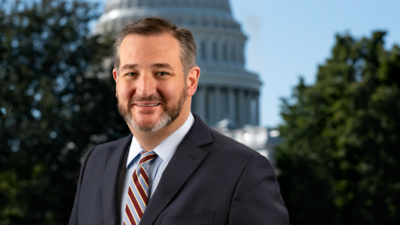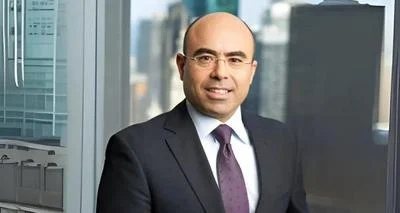Carrie Sheffield | Wikimedia Commons / Patrick Ryan
Carrie Sheffield | Wikimedia Commons / Patrick Ryan
The debate over the efficacy of rate cap laws in the lending industry has intensified, with conflicting perspectives emerging on their impact on unbanked individuals.
The discourse was sparked by a report from The Woodstock Institute, which lauded Illinois' 36% rate cap on small dollar loans, instituted in 2021, claiming it saved consumers over $600 million in interest and fees.
However, the report has faced criticism from Carrie Sheffield, a Senior Policy Analyst at the Independent Women’s Forum who has overseen risk management of billions of dollars at Wall Street institutions and argues that such laws may inadvertently harm vulnerable populations.
"That sole data point of reported $600 million in isolation ignores the broader context of the harm of Illinois’ rate cap policy,” Sheffield told Chicago City Wire.
“Yes perhaps consumers might pay less in some product lines, but the negative externality is that consumers shift their demand to products on the black market and even unsafe to consumers. These black market products are unregulated and expand the ‘informal economy’ that creates even more economic instability for vulnerable populations.“
Sheffield expressed skepticism regarding the purported benefits of the rate cap, emphasizing the need to consider the broader ramifications.
“Additionally, the Woodstock report itself notes that pawn loan saw a sharp spike in APR, from 168% to 240%,” she said.
“As Woodstock admits, these pawn stores are not required to report their full data to the Illinois Department of Financial and Professional Regulation. As a result, we have no idea what type of exploitative practices have expanded in the wake of this poorly-designed rate cap bill.”
She highlighted the emergence of black market lending alternatives and the potential for consumers to resort to unsafe financial practices.
Drawing from personal experiences, Sheffield, the author of Motorhome Prophecies, underscored the risks associated with pawn loans, citing instances where families faced economic instability and loss of valuable assets.
“As a child who grew up in motor homes, sheds and tents and periodically on the welfare system, my father was a frequent consumer of pawn shop loans. I can say from firsthand experience, it would have been far safer for our family to have greater access to regulated lending products than pawn loans,” Sheffield said.
“Because not only are families on the hook for paying back these installment loans, they can also risk losing family heirlooms, like my father’s wedding ring and watch.”
Moreover, Sheffield challenged the methodology of the Woodstock report, questioning its statistical analysis and the validity of its findings. She argued that the decrease in consumer fees could be attributed to a reduction in loan availability rather than an improvement in economic well-being.
“After Illinois its rate cap on March 23, 2021, approximately 50% of all installment lender licenses expired the following year, leaving many consumers without access to credit,” Sheffield said.
“A study on rate caps published by the New York Federal Reserve found that many consumers shift to overdraft fees when rate caps are imposed. Another study, from the Journal of Banking & Finance, found that consumers shift to late bill payments, possibly leading to a utility hook up fee that can be more costly than a payday loan.”
Sheffield cautioned against drawing direct correlations between the rate cap and indicators such as bankruptcy filings, suggesting that other factors could have influenced the outcomes.
“[A]ll states listed in this report showed sharp declines in filings, including those with far more permissive lending laws than Illinois,” she said. “In addition, Woodstock does not control for other variables that may impact bankruptcy filings (states and cities imposed differing laws and ordinances with differing timelines on COVID restrictions that would have a direct impact on bankruptcy filings, such as eviction moratoriums). Thus, Woodstock does not illustrate that bankruptcy filings and the Illinois rate cap are related. This is poor statistical methodology.”
In a parallel development, similar debates have emerged in South Carolina, where advocacy groups are pushing for regulatory measures targeting lenders.
“[T]his South Carolina bill is deeply flawed and will harm vulnerable South Carolinians,” Sheffield said.
“It’s also grasping at straws to attack lenders. A mere 0.01% of supervised loans garnered a consumer complaint in South Carolina in 2021. According to the South Carolina Department of Consumer Affairs, there were 1.2 million supervised loans provided to South Carolina consumers in 2021. Despite the high number of supervised loans in South Carolina, consumers had submitted only 132 total complaints to the Consumer Financial Protection Bureau (CFPB) about personal loans that year.”
Despite previous unsuccessful attempts to implement rate caps, organizations like the Self-Help Credit Union and the Center for Responsible Lending are now supporting a bill aimed at regulating lenders' marketing practices.
Sheffield expressed concerns regarding the potential consequences of such legislation, warning that it could exacerbate challenges faced by marginalized communities.
“The South Carolina bill will also hold back Black and Hispanic consumers, contrary to Woodstock’s claims,” she said.
“According to a recent Morning Consult Survey, a large plurality of consumers who had borrowed from a FinTech company saw their credit scores increase 12 months after taking out their loan. In the same survey, lower- and middle-income groups saw the largest net improvements while Black and Hispanic consumers said their credit scores improved the most.”
She argued that the proposed bill could restrict access to credit for underserved populations, particularly Black and Hispanic consumers.
Sheffield urged policymakers to reconsider their approach and focus on addressing broader economic issues affecting low-income individuals.
In her comments Sheffield noted a Woodstock Institute report which, in contrast, noted the positive impact of Illinois' Predatory Loan Prevention Act (PLPA), which imposed a 36% interest rate cap.
The report highlights overwhelming support for the PLPA among Illinois consumers and emphasizes the need to defend against potential attacks on the law to safeguard vulnerable communities from predatory financial practices.
Contrary to Sheffield’s findings, the Woodstock Institute said Illinois’ law curbed predatory lending practices, saving consumers over $600 million in interest and fees.
In January 2023 Sheffield authored a report for the Independent Women’s Forum titled “How Illinois Is Harming The Unbanked” in regard to rate cap regulations in the state.
In it she noted Illinois' implementation of a 36 percent interest-rate cap on small-dollar loans has disproportionately harmed vulnerable populations.
Implemented in March 2021, the cap aimed to regulate non-bank and non-credit-union lenders offering loans under $40,000. However, research suggests that the cap reduced credit availability for high-risk borrowers, particularly minority and low-income individuals, contrary to its intended outcome.
Furthermore, Sheffield argued the rate cap led to a decrease in small-dollar credit accessibility, exacerbating financial challenges for many consumers, especially the unbanked and underbanked segments of society.
This policy debate underscores broader concerns about the impact of regulatory measures on economic inclusivity and consumer choice.
Sheffield, a prominent columnist and broadcaster based in Washington DC, boasts a diverse background.
Overcoming significant personal challenges, including poverty and abuse, she earned a master's degree in Public Policy on a full scholarship at Harvard University and afterward delved into high-stakes financial management on Wall Street before transitioning to journalism and advocacy.





 Alerts Sign-up
Alerts Sign-up